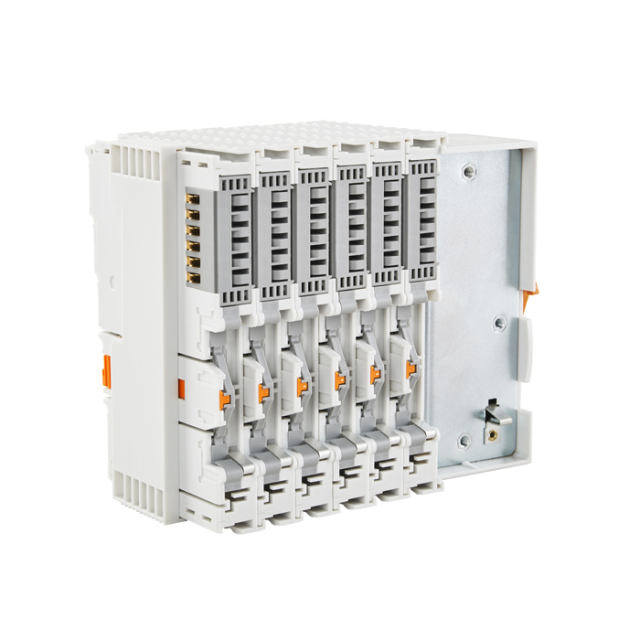Disaggregated Storage and I/O Systems – The Future of Data Architecture

Strong 8k brings an ultra-HD IPTV experience to your living room and your pocket.
Introduction:
In the fast-evolving world of data architecture, the shift towards distributed Input/Output (I/O) systems has marked a significant turning point. With the rise of cloud computing, Big Data, and artificial intelligence (AI), the need for scalable, flexible, and high-performance data systems has never been greater. Among the most exciting developments in this field is the emergence of disaggregated storage and I/O systems, which represent the future of how data is managed, processed, and accessed. This article will explore the evolution of distributed I/O systems, the concept of disaggregation, and its potential to reshape the future of data architecture.
The Need for Distributed I/O Systems
Traditional I/O Systems: A Brief Overview
Traditionally, I/O systems have been tightly coupled with the compute resources in data centers. In early computing environments, storage and processing were often directly attached to the same hardware, making systems easier to deploy but also prone to scalability bottlenecks. This architecture worked for a time, especially in less complex computing tasks, but as workloads grew larger and more diverse, these systems began to show their limitations.
The Challenges of Scaling Traditional I/O Systems
As organizations and applications grew in size, so did the demands on their infrastructure. Traditional I/O systems struggled with:
1.Scalability: Scaling up a single system often required costly hardware upgrades and complex configurations.
2.Data Throughput and Latency: With the increased volume of data being processed, traditional I/O systems struggled to maintain high throughput and low-latency access.
3.Flexibility: Coupling compute and storage together meant that companies couldn’t independently scale these resources according to their specific needs.
Rise of Distributed I/O Systems
Distributed I/O systems were developed to overcome these limitations by separating storage and compute resources. In a distributed I/O architecture, different components of a data system, such as storage, compute, and networking, are decoupled and dispersed across a distributed network. This approach offers several advantages:
Improved Scalability: Each component can be scaled independently based on demand, enabling more efficient resource utilization.
Fault Tolerance and Resilience: By distributing data and computational resources across multiple locations, these systems can provide greater fault tolerance and uptime.
Performance Optimization: Distributed systems can improve data throughput and reduce latency by distributing processing and storage tasks closer to where the data is needed.
As businesses and technologies continue to generate enormous amounts of data, the need for scalable, distributed I/O systems became clearer.
Disaggregation: A Key Concept in Modern Data Architectures
One of the core innovations driving the evolution of distributed I/O systems is disaggregation—the separation of storage, compute, and I/O resources. This approach allows for independent scaling of each resource, improving overall performance, cost-efficiency, and flexibility. Disaggregation in the context of I/O systems specifically refers to decoupling the storage layer from the compute layer, allowing both layers to be optimized separately.
The Role of Disaggregated Storage
Disaggregated storage systems enable organizations to treat storage resources as a pool of independent and elastic resources, separate from compute resources. This allows businesses to manage storage capacity independently of compute resources, leading to increased flexibility, better cost management, and the ability to scale storage without the need for corresponding compute infrastructure.
Disaggregated storage can be particularly beneficial in scenarios where:
Large Volumes of Data Need to Be Processed: Applications like big data analytics, AI, and machine learning require high-performance storage systems that can quickly handle vast amounts of data.
High Availability is Crucial: Disaggregated storage systems often come with built-in redundancy and failover capabilities, ensuring continuous data availability.
Elastic Scaling is Required: Businesses can scale storage up or down based on actual demand, rather than relying on fixed infrastructure.
Disaggregated storage systems are a critical component of modern cloud infrastructure, helping to overcome the rigidity of traditional on-premise storage architectures.
Disaggregated Compute and I/O
In addition to disaggregated storage, the decoupling of compute and I/O resources also plays a vital role in improving the efficiency of distributed systems. In traditional monolithic systems, compute power and I/O subsystems are tightly integrated, limiting the system's ability to adapt to fluctuating workloads. By disaggregating these components, it becomes possible to allocate compute and I/O resources independently to meet specific application needs.
For example, in a distributed cloud environment, compute resources might be located in one region, while storage and I/O resources are located in another. This separation allows workloads to access only the necessary resources without the overhead of unnecessary data transfers or dependencies between compute and storage. Additionally, disaggregation facilitates the use of different types of storage or compute solutions optimized for specific use cases, such as high-performance computing (HPC), data-intensive applications, or low-latency requirements.
Key Benefits of Disaggregated Storage and I/O Systems
1. Enhanced Scalability and Flexibility
One of the most significant advantages of disaggregated I/O systems is the ability to scale components independently. Storage resources can be expanded or reduced based on data needs, while compute resources can be adjusted according to processing requirements. This ensures that the system remains efficient, cost-effective, and responsive to changing workloads.
In traditional systems, scaling typically meant over-provisioning both compute and storage to handle future demand. With disaggregated systems, organizations can scale only what is necessary, optimizing resource utilization and reducing unnecessary costs.
2. Cost Efficiency
With disaggregated I/O systems, businesses can achieve better cost efficiency by avoiding the need to purchase large, monolithic hardware systems that bundle compute and storage together. Instead, companies can focus on acquiring the resources they need for specific workloads, which may lead to lower capital expenditures.
Additionally, disaggregation allows for the adoption of cloud-based storage and compute services, where businesses only pay for the resources they consume. This pay-as-you-go model is particularly beneficial for companies with fluctuating resource demands or startups with limited budgets.
3. Performance Optimization
By separating I/O and storage resources from compute resources, disaggregated systems allow for a more focused optimization of each component. This can result in better overall performance for both storage and compute workloads.
For example, storage systems can be optimized for high throughput or low-latency access, depending on the specific needs of an application. Meanwhile, compute resources can be tuned to maximize CPU or GPU performance, depending on whether the workload is CPU-bound or requires more specialized computation.
4. Resilience and Fault Tolerance
Disaggregated storage systems also come with built-in resilience features. In a distributed environment, storage can be spread across multiple nodes and locations, making it more resilient to hardware failures or network issues. If one part of the system fails, others can take over without compromising data integrity or availability.
This distributed architecture also supports automated failover mechanisms, ensuring minimal downtime and uninterrupted access to critical data.
5. Simplified Management and Automation
Modern disaggregated I/O systems leverage sophisticated management and orchestration platforms that enable automated provisioning, scaling, and monitoring of resources. This reduces the complexity of managing large-scale systems and allows businesses to focus on higher-level tasks, such as optimizing workloads or analyzing data.
Orchestration tools and APIs can dynamically allocate storage and compute resources in real-time, making it easier to manage large, distributed environments with minimal manual intervention.
Real-World Applications of Disaggregated Storage and I/O Systems
Cloud Computing
Cloud service providers like Amazon Web Services (AWS), Google Cloud Platform (GCP), and Microsoft Azure have embraced disaggregated I/O systems to deliver highly scalable, flexible, and resilient services. In these environments, storage, compute, and networking resources are often decoupled, allowing organizations to quickly scale resources up or down based on demand.
For example, AWS offers services like Elastic Block Store (EBS) for disaggregated storage, while its EC2 instances provide scalable compute power. Together, these components form the backbone of many cloud applications that require distributed, high-performance storage and compute capabilities.
Big Data and Analytics
Big data applications such as Apache Hadoop and Spark rely on distributed storage and I/O systems to process massive datasets across clusters of machines. These systems can ingest, store, and process petabytes of data in parallel, allowing for real-time analytics and machine learning applications.
Disaggregated systems allow for the efficient scaling of both storage and compute resources in these scenarios, ensuring that the performance of data-intensive workloads remains high even as data volumes grow.
High-Performance Computing (HPC)
In industries like scientific research, engineering simulations, and finance, high-performance computing (HPC) applications require systems that can handle massive amounts of data and complex calculations. Disaggregated I/O systems are ideal for these workloads because they allow researchers to access high-performance storage while running computationally intensive models on dedicated compute resources.
Disaggregated storage ensures that large datasets are readily available, while the ability to scale compute resources independently ensures that simulations and analyses can be completed efficiently.
See the full article
Note: IndiBlogHub features both user-submitted and editorial content. We do not verify third-party contributions. Read our Disclaimer and Privacy Policyfor details.


